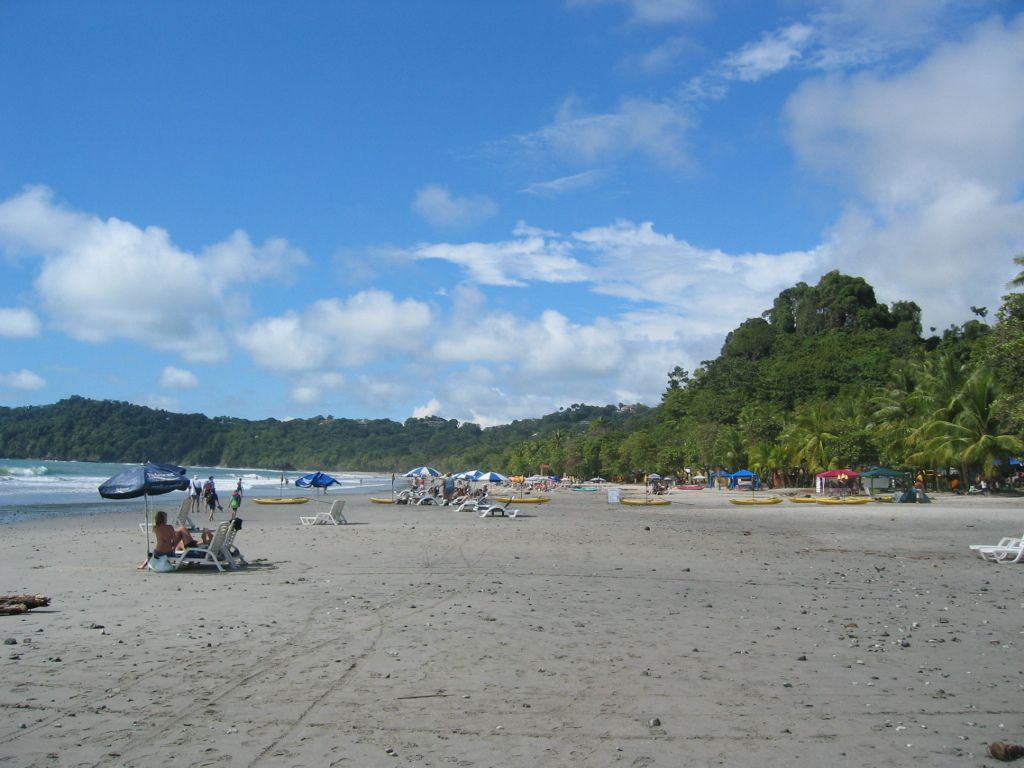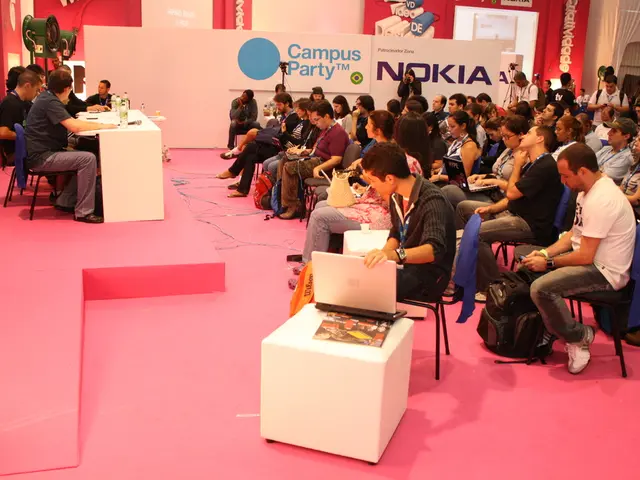Web2's shortcomings exposed by TikTok's unclear future - Opinion piece
In today's digital landscape, creators are grappling with the uncertainties that come with centralized platforms like TikTok. It's not just about national security—it's about control. With millions of creators relying on these platforms for online visibility and income, the constant uncertainty regarding their future highlights the immense impact that such platforms can have on a creator's livelihood. In these centralized environments, key aspects of a creator's presence—from monetization to content accessibility—are shaped by decisions that may not always put the creators' interests first.
Times are a-changin', though. The Web3 era is calling for a rethink, as we move from traditional capital-based systems to those built on code, narrative, and moral design. The situation of TikTok highlights a broader issue. Creators on web2 platforms have repeatedly faced sudden policy shifts that have significantly impacted their earnings and reach.
Let's take a glance at some examples:
- The 2016-2017 YouTube 'Adpocalypse' saw a wave of videos demonetized due to revised advertising policies.
- Patreon's fee structure changes in 2017 raised concerns among smaller creators.
- Platform-wide content policy updates on Tumblr in 2018 disrupted longstanding communities.
- Changes to Instagram's algorithm have altered how, and whether, creators' content reaches their audiences, often without transparency or recourse.
What do these examples have in common? Creators on centralized platforms often have little control over the systems they work within. Policies, algorithms, and monetization options are subject to frequent changes, with creators seldom having a say in the decision-making process.
Decentralized platforms, on the other hand, present a more promising path forward. While these platforms are yet to become mainstream, they promise creators greater control over their content and its management. By combining permanent and temporary storage models, creators can optimize their digital presence for speed, accessibility, and resilience.
Web3 offers creators the opportunity to regain control over their work. Centralized systems, with their opaque policies and arbitrary decisions, can't compare to the transparency and openness found in Web3 solutions. Features like open-source software, decentralized provider networks, user-driven storage options, and transparent pricing models offer protection and predictability that centralized systems often lack.
The next generation of platforms must deliver concrete improvements, such as more efficient uploads, scalable storage, and interfaces that seamlessly fit into creators' existing workflows. Web3—with its promise of transparency, autonomy, and sustainability—will not replace web2 overnight. Yet, it can offer creators a real alternative that puts their interests first—an empowering change indeed.
The integration of decentralized storage solutions, such as Arweave, allows creators to maintain long-term access to their content while reducing their dependence on centralized gatekeepers. This model not only increases resilience against censorship or algorithmic suppression but also opens up new opportunities for monetization not tied to big tech corporations' priorities.
In the digital media industry, I've witnessed firsthand the importance of creators having true ownership over their work. Decentralization and free speech are not just ideals—they're practical foundations for building more sustainable and creator-centric ecosystems. So, let's embrace a shift towards a future built on transparency, autonomy, and sustainability. At Odysee, we're committed to giving creators genuine ownership over their work and providing them with a platform that respects their autonomy. With the integration of permanent storage networks like Arweave, we're taking decisive steps towards a more open, resilient, and creator-first digital economy.
From print to TikTok: PR Perspectives on the End of Media and InfluencersJulian Chandra, the founder and CEO of Odysee, is a pioneer in the digital media industry. Prior to Odysee, Julian led strategic partnerships for TikTok in Australia and New Zealand, witnessing the platform's early global expansion. With experience spanning both big tech and web3 ecosystems, he's focused on creating tools that give creators ownership, bypass traditional gatekeepers, and promote transparency. Recently, Odysee joined the Arweave ecosystem, further enhancing creator autonomy and content permanence. Passionate about free expression and digital sovereignty, Julian continues advocating for technologies that safeguard open access to information in an increasingly centralized internet.
Enrichment Data
Overall:
Decentralized platforms, powered by blockchain and Web3 technologies, offer creators a fundamentally different experience and set of benefits compared to centralized platforms like TikTok, YouTube, Patreon, Tumblr, and Instagram.
Key Benefits of Decentralized Platforms for Creators
- True Ownership of Content and Data On decentralized platforms, creators retain ownership of their work and data. Unlike centralized platforms—where companies own or control user data and can remove content at their discretion—decentralized systems use blockchain and smart contracts to ensure creators always retain rights and control over their digital assets.
- Example: Instagram and YouTube can delete accounts or videos for policy violations, sometimes without appeal. In contrast, creators on decentralized platforms manage their content directly, reducing the risk of arbitrary removal.
- Direct Monetization Without Middlemen Decentralized platforms enable creators to receive payments directly from fans, bypassing platform intermediaries that typically take significant cuts for hosting, payment processing, or ad revenue.
- Example: On TikTok, YouTube, and Patreon, creators pay fees or share revenues with the platform. Decentralized alternatives allow creators to set up smart contracts that distribute royalties automatically, so more revenue goes to them.
- Transparency and Community Governance Web3 platforms often use DAOs (Decentralized Autonomous Organizations) where community members—including creators and their fans—can vote on platform rules, content moderation, and feature development.
- Example: Tumblr, like other centralized blogs, is governed by corporate policies. In a DAO-driven platform, the community collectively decides on content policies and new features, potentially reducing bias and increasing creator influence.
- Resistance to Censorship Decentralized platforms are inherently more resistant to censorship since there is no central authority that can block access or remove content unilaterally.
- Example: Centralized platforms like Facebook, Instagram, or YouTube may restrict or remove content due to geopolitical or policy reasons. Decentralized platforms reduce this risk, allowing creators to reach audiences without fear of arbitrary takedown.
- Enhanced Privacy and Security Creators on decentralized platforms can interact without exposing sensitive personal information, as these systems do not require extensive KYC (know-your-customer) procedures.
- Example: Patreon requires identity verification and collects personal data. Decentralized equivalents allow creators to receive support pseudonymously or anonymously.
Potential Impacts on Creators
- Empowerment and Autonomy Creators gain more control over their work, revenue streams, and audience relationships, reducing dependence on platform policies or algorithm changes.
- New Forms of Fan Engagement Token-based communities and DAOs enable fans to become co-creators or stakeholders, deepening engagement and loyalty.
- Risks and Challenges
- Responsibility for Security: Creators must manage their own wallets and private keys, which can be a technical challenge and increases risk if they are not security-savvy.
- Regulatory Uncertainty: Decentralized platforms may face unclear legal frameworks, affecting monetization and content distribution.
- User Experience: Decentralized platforms may be less user-friendly or lack features compared to established centralized platforms.
Examples from Centralized vs. Decentralized Platforms
| Platform Type | Example | Creator Experience/Impact ||--------------------|---------------------|---------------------------------------------|| Centralized | YouTube | Revenue sharing, content moderation, ownership issues || Centralized | TikTok | Algorithm dependence, revenue splits, policy changes || Centralized | Patreon | Payment processing fees, identity requirements, platform policies || Centralized | Tumblr | Content moderation, limited monetization || Centralized | Instagram | Content removal, algorithm changes, data control || Decentralized | Web3/DAO platforms | Direct monetization, ownership, community governance, censorship resistance |
- The Web3 era, contrary to centralized platforms like TikTok, promises creators greater control over their content and management, offering a resilient digital presence optimized for speed, accessibility, and transparency.
- By employing permanent and temporary storage models, creators can seize opportunities for monetization not tied to big tech corporations' priorities, such as with the use of decentralized platforms like Arweave.
- Decentralized platforms offer key benefits such as true ownership of content and data, direct monetization without intermediaries, transparency, community governance, and resistance to censorship, empowering creators to bypass traditional gatekeepers.
- In a DAO-driven platform, the community decides on content policies, new features, and platform rules, potentially reducing bias and increasing creator influence, as compared to centralized platforms governed by corporate policies.








